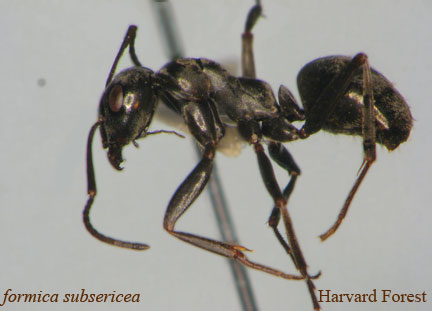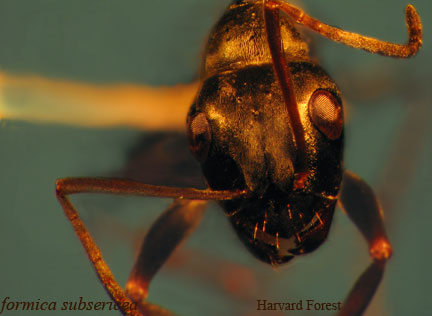0a. Nests are giant-sized mounds F. exsectoides
0b. Nests not giant-sized mounds 1
1a. Bicolored (head and thorax red), clypeus notched (slave-makers and social parasites) 2
1b. Clypeus not notched 5
2a. Petiole with large, fan-shaped scale F. aserva
2b. Petiole scale smaller, not fan-shaped 3
3a. Erect hairs on mesosoma and long hairs on gaster; open habitats F. pergandii
3b. Not as 4
4a. Propodium more pointed; orange-red and black F. rubicunda
4b. Propodium rounded; gaster often brown with some orange F. subintegra
5a. Bicolored, no silvery pubescence 6
5b. Not bi-colored, or if bi-colored, with silvery pubescence 8
6a. Not shining (Rufa group) 7
6b. Shining F. (Neoformica) incerta
7a. Tibia on middle and rear legs lacking erect hairs on outer surface F. integra
7b. Tibia with many erect hairs F. obscuriventris
8a. Ants lack silvery pubescence (Neogagates group) 9
8b. Ants with pronounced silvery pubescence (Fusca group) 10
9a. Ants of open fields; >1 erect hairs on scape F. lasiodes
9b. Ants of forests; no erect hairs on scape; clear and brown, smooth and shiny F. neogagates
10a. Bicolored – head and gaster dark; thorax lighter (often red); silvery pubescence on head F. neorufibarbis
10b. Not bi-colored 11
11a. Body brownish black to black, silvery pubescence abundant many erect hairs (8-27, mean 17) on first gastric tergite; boreal F. hewetii
11b. Less hairy; broader range; pubescence variable 12
12a. Body brown-black; << 10 erect hairs (mean=4) on first gastric tergite, pubescence faint F. fusca
12b. Body black or brown-black; > 10 erect hairs on gaster; pubescence pronounced 13
13a. Pubescence dense on head, first four gastric tergites, usually absent on legs; brown ant F. argentea
13b. Ant brown-black to black; pubescence dilute on 4th gastric tergite 14
14a. Scapes longer than length of head; ant large, black; pubescence on head, thorax, legs, and on 1-3(4) gastric tergites F. subsericea
14b. Scapes shorter than length of head, smaller; pubescence variable 15
15a. Promesonontum normally lacking haris; pubescence on 1-2(3) gastric tergites, boreal F. glacialis
15b. Promesonotum normally with erect hairs; pubescence on 1-3(4) tergites F. podzolica
Reference: Francoeur, A. 1973. Révision taxonomique des espèces néarctiques du groupe Fusca, genre Formica (Formicidae, Hymenoptera). Memoires de la Société Entomologique du Québec 3: 1-316.
Formica aserva

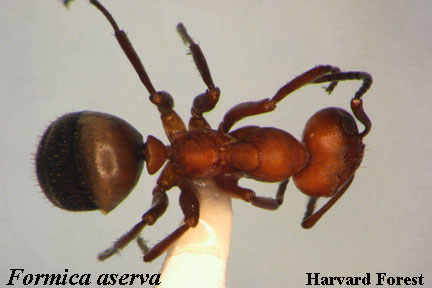
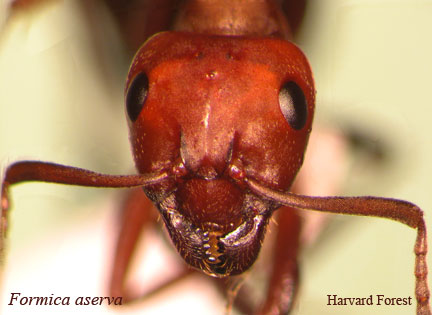
Formica pergandii
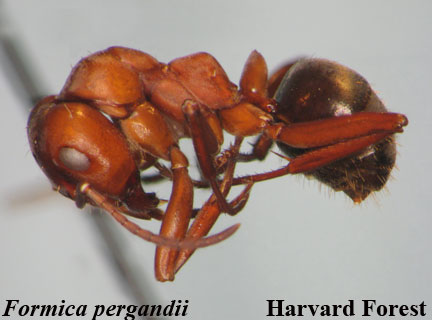
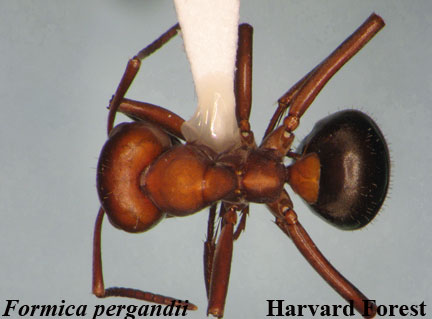
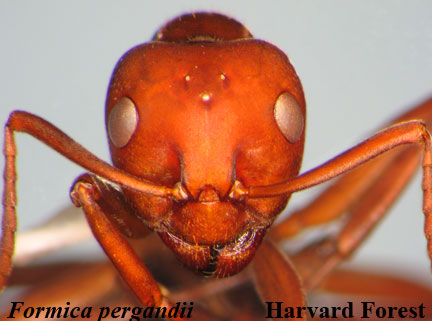
Formica (Neoformica) incerta

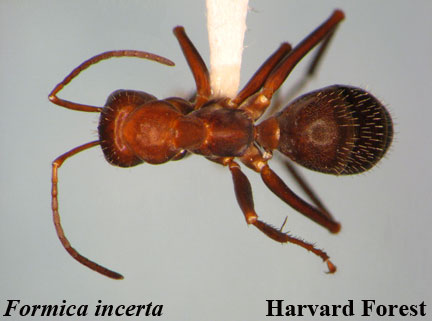

Formica obscuriventris

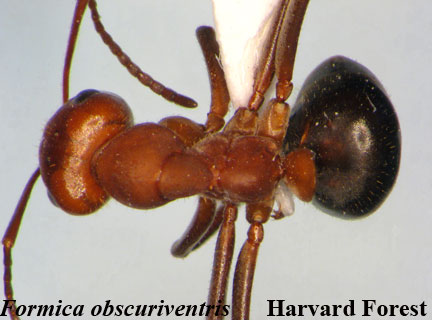
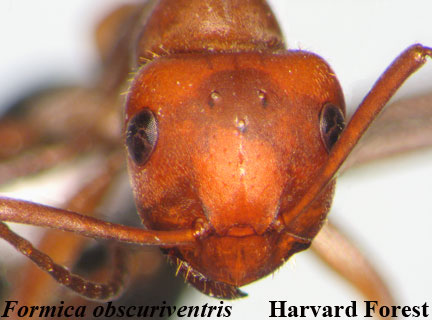
Formica neogagates
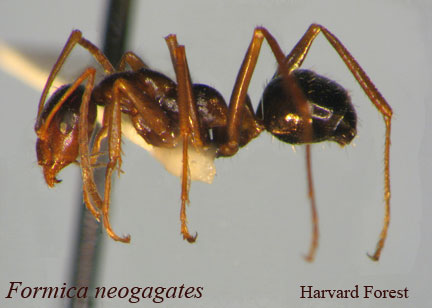
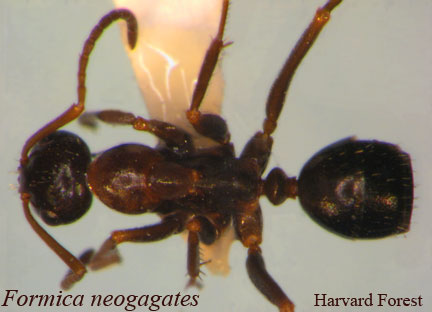
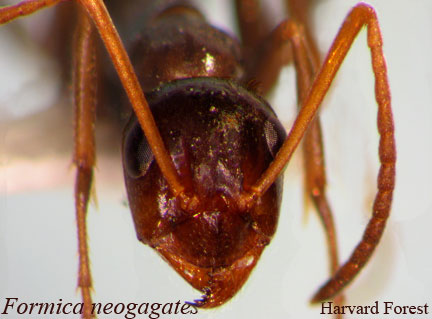
Formica neorufibarbis
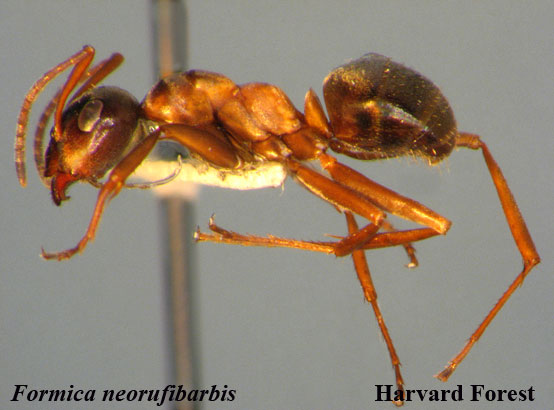

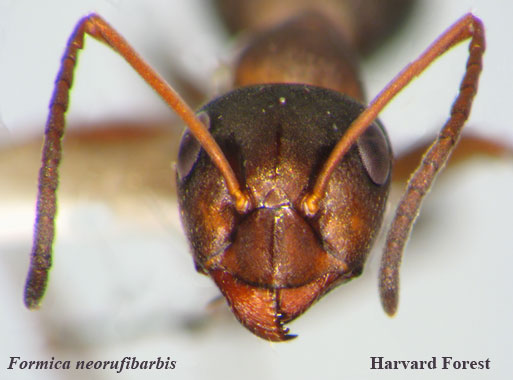
Formica subsericea
Family: Formicinae
Found in open woods and around the edges of woods. Workers forage for seeds and plant material mostly during the day. They gather the seeds for the nutritious elaiosomes, aiding in seed dispersal. They also tend aphids for honeydew.
Their colonies are large. Their nests are low mounds with many entrances, sometimes under rocks or other objects.

